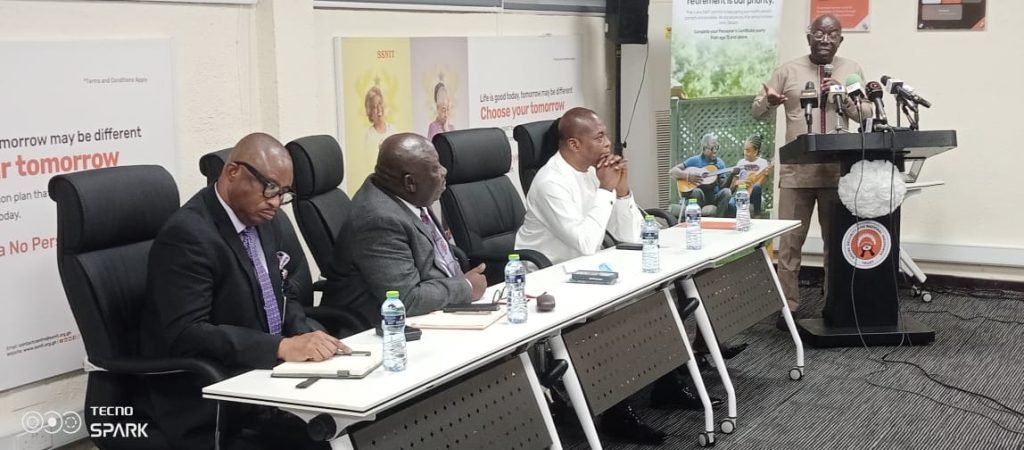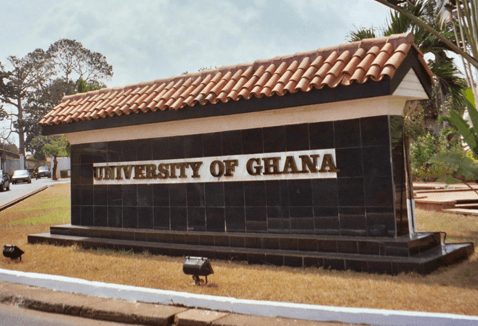
…but …galamsey threatens progress
By Kizito CUDJOE
As the world prepares for COP30 in Belém, Brazil – where leaders are expected to adopt the proposed Belém Action Mechanism for Just Transition – Ghana’s renewable energy ambitions are gaining new momentum.
From Africa’s largest rooftop solar project by LMI Holdings Limited to Dawa Industrial Park’s planned solar field at Agortor to Bui’s floating panels on the Black Volta, the country’s clean energy journey mirrors the global debate unfolding in the heart of the Amazon on how to accelerate climate action without leaving people and places behind.
The Belém Mechanism will seek to ensure that workers, communities and regions dependent on high-carbon industries are supported through job creation, skills training and economic diversification. For Ghana, this principle is already being tested on the ground polluted river valleys of Western Region.
Ghana’s ambition to achieve a 15 percent share of renewable energy in its electricity mix by 2030 faces growing environmental challenges, particularly the impact of illegal mining – known locally as galamsey, which is increasingly degrading the country’s water-bodies and threatening future hydro and hybrid power generation.
Former President Nana Addo Dankwa Akufo-Addo launched the country’s energy transition blueprint, the National Energy Transition Framework (NETF), at COP27 in Egypt to guide Ghana’s gradual shift from fossil fuels to cleaner energy and ultimately attain net-zero emissions by 2070.
“This framework will ensure that Ghana’s transition is achieved in a just and equitable manner. In doing so, Ghana is not oblivious to the need for balancing its commitment to net zero and an urgent need to transform its economy through exploiting the natural resources it has been endowed,” Mr. Akufo-Addo said.
The framework, central to Ghana’s decarbonisation agenda and contribution to Paris Agreement objectives, commits the country to increasing renewable energy’s share of total electricity generation as part of the national energy mix.
“This is a long-term net-zero framework (2022–2070), expected to complement existing efforts with new measures such as increased renewable energy penetration, conversion of thermal plants to natural gas and integrating nuclear power into the energy mix,” he added.
Initially conceived in 2003 under the Renewable Energy Development and Management Programme (REDP), the country’s renewable targets achieved only modest progress – rising to about 0.8 percent by 2019. The goal remains expanding renewable generation capacity from 42.5 megawatts (MW) in 2015 to over 1,360 MW by 2030, including about 1,094 MW of grid-connected systems.
Currently, Ghana’s total installed electricity generation capacity stands at around 5,749 MW, with a dependable capacity of 5,211 MW. Renewable energy sources, excluding large hydropower, account for about 4.2 percent, or 270 MW, of the national mix.
The task ahead is enormous: the country’s total energy demand is projected to rise from 8,195 kilotonnes of oil equivalent (Ktoe) in 2020 to nearly 41,725 Ktoe by 2070, driven by population growth and expanding economic activity. Electricity generation is expected to increase from 18,592 gigawatt hours (GWh) in 2020 to 344,272 GWh by 2070, with emissions peaking in the mid-2050s before declining toward net zero as cleaner technologies take hold.
Installed capacity is projected to grow from 5,392 MW in 2020 to over 84,000 MW by 2070, with renewables – mainly solar and wind – expected to contribute about 20 percent of total capacity. This shift, supported by a transition to cleaner fuels and hydrogen adoption, could reduce overall emissions from 28 million tonnes of CO2 equivalent in 2020 to about 14.5million tonnes by 2070.
However, environmental degradation caused by illegal mining threatens to derail these plans. Siltation and pollution of major water-bodies have already made some rivers unsuitable for damming and hydroelectric generation, limiting the potential for solar-hydro hybrid systems envisioned under the transition plan.
President John Dramani Mahama, linking the transition to his proposed ‘24-Hour Economy‘, stressed that the demand for dependable power will grow sharply across all sectors, including manufacturing, food processing, mining, textiles and ICT.
“In line with the National Renewable Energy Master Plan, we are seeking to achieve a minimum of 15 percent renewable energy share by 2030,” he said. “Through initiatives such as Solar for Industries (SFI), we are advancing this goal and aligning Ghana with the global clean energy transition. This will enable our industries to stay competitive under new global trade regulations, including the EU’s Carbon Border Adjustment Mechanism, which will penalise exports from high-carbon economies.”
The SFI project, located at Dawa Industrial Park in Greater Accra Region, is a 200-megawatt peak (MWp) solar photovoltaic (PV) park, one of the largest industrial solar initiatives in West Africa. Estimated at US$150million, it marks a key step in expanding clean energy access and promoting low-carbon industrial growth.
In December 2023, the project secured a US$100million facility from the International Finance Corporation (IFC) to finance its first phase, expected to supply power for businesses within the Dawa Industrial Zone. Construction is scheduled to begin following the sod-cutting ceremony, with plans of eventually scaling up capacity to 1,000 MW as part of broader efforts to diversify Ghana’s energy mix.
Additionally, the Minister for Energy and Green Transition said government plans to add about 1,400 MW of new renewable capacity in line with its commitment to build a cleaner and more resilient power system.
“In our current state, modern renewables account for about 4.2 percent of Ghana’s energy mix. Including large hydropower, that figure rises to roughly 28 percent,” explained Dr. Robert Sogbadji, Deputy Director-Nuclear and Emerging Green Technologies, Ministry of Energy.
He noted that renewable integration includes both government-led and private distributed generation projects. “For instance, the Helios Solar Energy Project HYPERLINK “https://thebftonline.com/2024/07/30/us17m-solar-project-to-enhance-2030-renewable-energy-target/”, HYPERLINK “https://thebftonline.com/2024/07/30/us17m-solar-project-to-enhance-2030-renewable-energy-target/”a 16.8 MW facility in the Free Zones Enclave, is one of the largest rooftop solar plants in Africa and it contributes significantly to the national mix,” he said.
Dr. Sogbadji added that with ongoing projects such as the 200 MW Dawa Solar Project, Bui Power Authority’s 50 MW ground-mounted and 10 MW floating solar plants and Volta River Authority’s 50 MW solar-hybrid plant, progress is steady. The planned 400 MW wind-farm in the Accra Plains, he said, will also substantially boost renewable capacity.
“On paper, once these projects are completed, Ghana will exceed 10 percent of modern renewable energy in its energy mix. But we set the 10 percent target as moderate and achievable,” he noted.
“Most of these projects have reached financial close and are preparing for construction, showing we are on course. Including large hydropower, Ghana’s total renewable share will reach around 30 percent.”
Dr. Sogbadji warned, however, that the effects of galamsey could undermine these advances. “Our intention is to hybridise solar and hydro power using water-bodies. During the day, solar facilities will generate electricity while water is stored; at night, the hydros will operate, ensuring 24-hour power generation to support the 24-hour economy. But if pollution continues, that target will be impossible to attain,” he cautioned.
He said recent interventions such as work of the National Anti-Illegal Mining Operations Secretariat (NAIMOS), the Blue Water Guards and intensified security operations show renewed resolve to clamp down on illegal mining.
“While clean-up efforts led by the Environmental Protection Agency (EPA) may delay some energy projects, they are necessary. We must allow time for the water to settle and for affected water-bodies to recover. Once that happens, we can get back on track to using these resources for solar-hydro hybrid generation and provide reliable 24/7 electricity to the national grid,” Dr. Sogbadji said.

The proposed Belém Action Mechanism for Just Transition is expected to show how countries can integrate worker training, job creation and community protection into national energy transitions. For Ghana, where artisanal miners and low-income communities rely heavily on extractive livelihoods, this global framework could provide the roadmap for managing social impacts while driving the green economy.
As the world gathers in Belém to decide how fair and how fast the global transition should be, Ghana’s story offers a message that cannot be ignored: the race to net zero will only be won when it reaches the very edges of our economies.
What happens next in Belém will matter not only in Accra, Agortor or Bui but far beyond the country. The question is no longer if the world will act, but whether its decisions will finally trickle down to frontline communities like Shama which can now no longer afford to wait.
The post In COP30 era: Gov’t eyes 15% renewable energy goal by 2030 appeared first on The Business & Financial Times.
Read Full Story



















Facebook
Twitter
Pinterest
Instagram
Google+
YouTube
LinkedIn
RSS